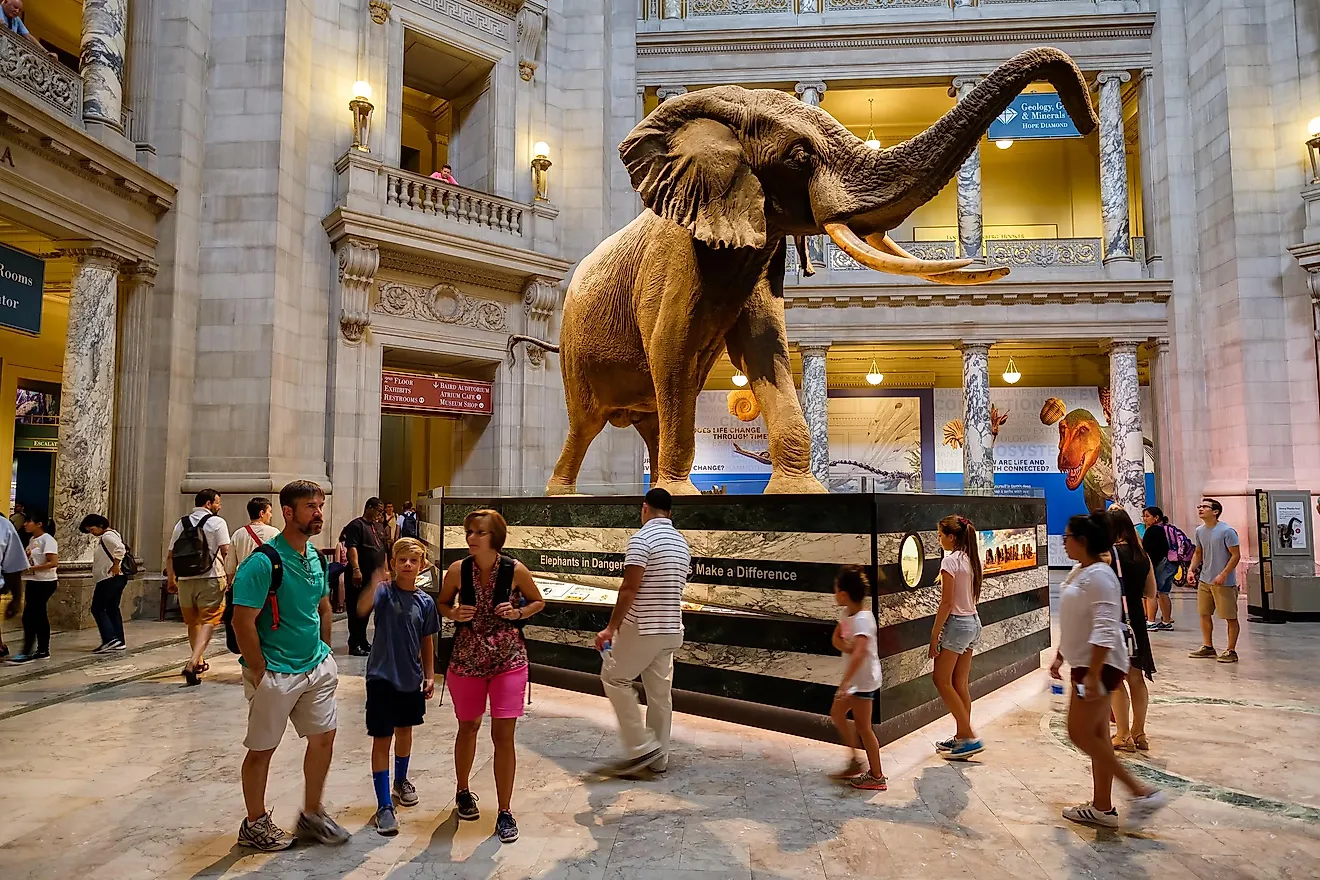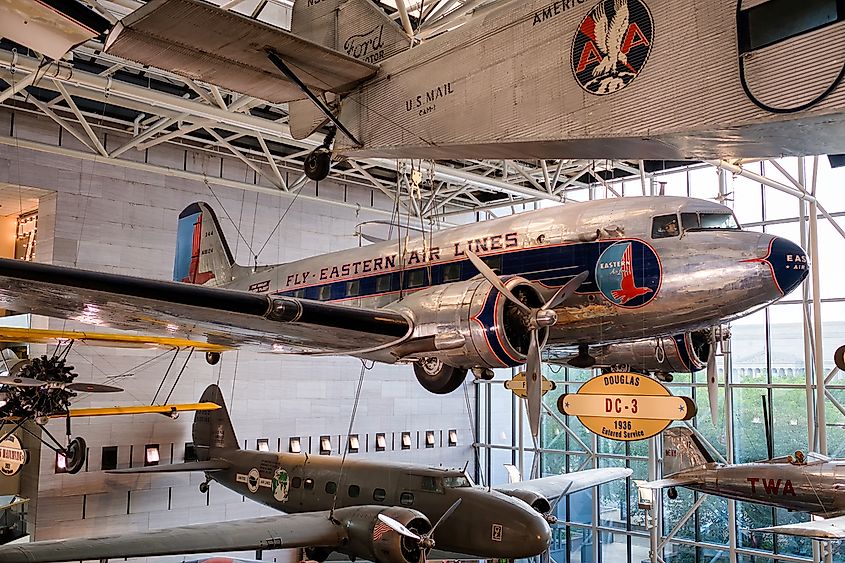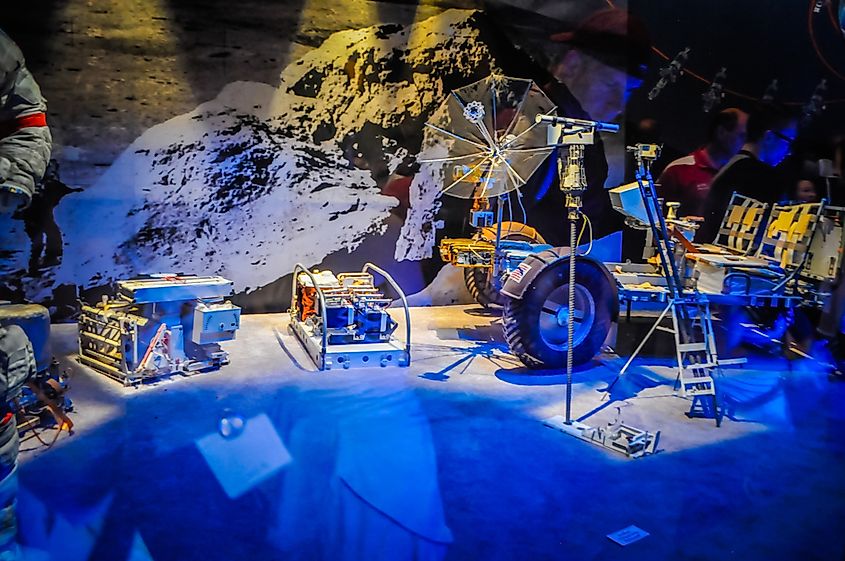Can I Visit The Smithsonian Institution In 2020?

In nearly every article we wrote about gemstones, we mentioned one or the other famous gem being on display in Smithsonian Institution, Washington DC. What is that magical place, and how can you get to visit it?
What Is The Smithsonian Institution?
The Smithsonian - or, in full, the Smithsonian Institution is a collective of art, history, and science museums and research centers under the patronage of the Government of the United States. It was founded on August 10, 1846. The name honors English scientist James Smithson who left everything he had to the institution.
This world-renowned museum and research complex includes 17 museums and galleries (including the National Zoo), in and around Washington, DC, and two museums in New York. The Smithsonian maintains and catalogs an enormous collection of artifacts and natural history objects. The collection contains more than 150 million items, works of art, and specimens altogether.
The majority of the museums are open year-round except for a few days. The admission is always free at every location for everyone!
The list Of Smithsonian Museums

The Smithsonian is 19 world-class museums, galleries, gardens, and a zoo. The central building is known as "The Castle." This is a great meeting spot, and the Visitors' Information Center with all the materials guests might need. There is also a crypt of the main benefactor of the institution James Smithson. Here is the full list:
- National Museum of Natural History: The history of evolution and life science objects
- National Air and Space Museum and National Air and Space Museum, Steven F. Udvar-Hazy Center: the progress of flying machines
- National Museum of American History: the history of the state
- National Zoo: live animals
- National Museum of African American History and Culture: historical and cultural artifacts
- American Art Museum and The Renwick Gallery of the Smithsonian American Art Museum: contemporary art objects
- Hirshhorn Museum and Sculpture Garden: mainly modern art and larger objects
- National Portrait Gallery: portraits
- Freer and Arthur M. Sackler Gallery: Asian art
- National Postal Museum: stamps and objects associated with the history of post
- National Museum of African Art: art from the talents of African origin and historical artifacts
- Anacostia Community Museum: African American culture artifacts
- National Museum of the American Indian Arts: native Americans arts
- American Indian Museum: mainly historical and anthropological objects and events (Ney York site)
- Cooper-Hewitt, Smithsonian Design Museum: history and impact of design (New York site)
- The Arts and Industries Building (the original home of the National Museum)
Where Are The Smithsonian Museums Located?
Eleven museums and galleries are located in Washington, D.C., at the National Mall. Six more museums and the National Zoo are located in the greater National Capital Area. The two additional museums are in New York City.
The Smithsonian in Washington has its own Metro stop on the Orange and Blue lines, and they strongly recommend using public transport to reach them, as the parking space is minimal and mainly reserved for guests with disabilities.
What Is Inside The National Museum Of Natural History?
The museums accumulated an impressive collection of natural artifacts and educational materials, only a small part of which are on display. Much more is accessible to researchers by request. The main sections are the Janet Annenberg Hooker Hall of Geology, Gems, and Minerals, Q?rius (yes, that is the correct spelling), the interactive science education center, and the David H. Koch Hall of Fossils dedicated to paleontology and paleoanthropology. Lesser permanent exhibits include an insect zoo and The Sant Ocean Hall featuring a true-to-size replica of the North Atlantic right whale.
Geology, Gems, And Minerals: The Earth's Treasures

This permanent exhibition is 20,000-square-foot large and contains samples, specimens, historical gemstones, and educational materials originating from the depth of the Earth, the outer space, and everything in between.
Five main galleries dedicated to geology, gems, and minerals are:
- Mine Gallery, recreating four historical mines and explaining their functioning;
- Plate Tectonics Gallery with its interactive theater explaining the continent-shaping processes within the Earth;
- Moon, Meteorites, and Solar System Gallery which discusses the evolution of the Solar system and has many extraterrestrial objects on display;
- Rocks Gallery focuses on a unique subject of the Earth history recorded in the processes of the rock transformation;
- The National Gem Collection.
What Are Some Famous Gemstones In The National Gem Collection?
The National Gem Collection is proud to carry an enormous (and said to be cursed) Hope diamond; 168-carat Mackay emerald; the Carmen Lúcia Ruby - is one of the largest faceted Burmese rubies ever found; and the Star of Asia sapphire. The public exposition displays 2,500 minerals and gemstones. Some other famous and incredibly valuable gems and jewelry pieces you can see here are:
- the Dom Pedro - the world's largest faceted aquamarine of 10,363 carats (4.6 pounds);
- the Cindy Chao Black Label Masterpiece Royal Butterfly Brooch with its 2,328 gems, including sapphires, diamonds, rubies, and garnets, for a total weight of 77 carats. You can see how the gemstones fluoresce under the UV light;
- a 263-carat diamond necklace and a tiara of Empress Marie-Louise, who received them from Napoleon;
- the Marie Antoinette diamond earrings;
- the Janet Annenberg Hooker fancy yellow diamonds and Hooker Emerald Brooch;
- two incredible topaz crystals from Brazil, weighing 111 and 70 pounds respectively, and a 23,000-carat cut-and-polished topaz;
- a 423-carat sapphire set in diamonds;
- the DeYoung red and pink diamonds;
- the 127-carat Portuguese diamond, the largest cut diamond in the collection;
and many more.
Objects Of Wonder Exhibit: Only Open Until 2021
This exhibition is about the collections of real objects and what we can learn about events that are distant in time and space. If you only have time for one Hall, you might want to choose to visit the Objects of Wonder. This temporary exhibition displays many of the most significant items from the collections, both specimens, and artifacts. The purpose and hope of this collection are to inspire curiosity and wonder and spark both interests in scientific research and artistic creativity.
They Also Have The Batmobile There!
The Batmobile from Tim Burton's "Batman" is a permanent part of the exposition, although it is on loan from Warner Brothers. The Batmobile is not just a decoration; it is a functioning car built on the chassis of a Chevrolet Impala.











